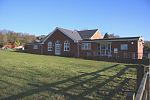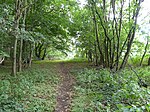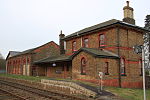Playford Hall
16th-century architecture in EnglandCountry houses in SuffolkEast Suffolk (district)Grade II* listed buildings in SuffolkGrade II* listed houses ... and 1 more
Scheduled monuments in Suffolk

Playford Hall is a country house in the civil parish of Playford, in the East Suffolk district, in the county of Suffolk, England. Playford Hall is set in 30 acres, the gardens were designed in 1960 by Lady Penelope Aitken. Playford Hall is owned and occupied by the Melrose family and the grounds are sometimes opened to support charities. The house is a Grade II* listed building and the moated site is a scheduled monument.
Excerpt from the Wikipedia article Playford Hall (License: CC BY-SA 3.0, Authors, Images).Playford Hall
Brook Lane, East Suffolk
Geographical coordinates (GPS) Address Nearby Places Show on map
Geographical coordinates (GPS)
| Latitude | Longitude |
|---|---|
| N 52.082948 ° | E 1.2291893 ° |
Address
Brook Lane
Brook Lane
IP6 9DZ East Suffolk
England, United Kingdom
Open on Google Maps






